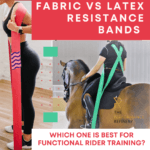Are you struggling with a recent injury that seems slow to heal — or an old injury that never healed properly? Do you feel as if some part of your body is “stuck” or otherwise unable to function as it should? Do you suffer from chronic pain and other uncomfortable musculoskeletal or neuromuscular issues? If you answered in the affirmative to any of these questions, then you may discover the answers to your distress in a form of care known as manual therapy. Manual therapy makes a natural complement to rehabilitative exercises and other sports science therapy techniques, so contact Performance Refinery in Del Mar, CA today to find out how it might enhance your health and quality of life!
What Is Manual Therapy?
Manual therapy is a branch of integrative sports science medicine. However, it requires the therapist to complete additional training. Manual therapy has a long history, reaching back to the ancient world and specifically ancient China, where certain manual techniques were already used to treat back pain. Indeed, chiropractic and osteopathy arose from this early form of manual therapy.
The major focus of manual therapy is the treatment of functional diseases of the locomotor apparatus. Therefore, it is limited to muscles, joints, and nerves. However, manual therapy is not only a specialized form of therapy but also serves diagnostic purposes. After the cause for discomfort is identified, therapy is usually performed by means of mobilization to restore unrestricted movement and to ease the pain.
In order to achieve this, the therapist applies special manual techniques using different approaches to mobilization. A distinction is made between traction, translatoric gliding, and soft tissue treatment. Traction means the joint is being stretched to relieve it from pressure. This eases the pain and also increases the mobility of the joint. Translatoric gliding is used to restore the joint to its former state of mobility and to extend its range of movement. Soft tissue treatment consists of various stretching and relaxation techniques. Gentle stretching is used to lengthen the muscles in order to adapt them as well as possible to the improved range of movement of the joint. The different techniques can be used to treat various joints, as well as intervertebral joints. This type of therapy usually doesn’t cause pain and is used together with therapeutic exercises. Ultimately, the goal is to strengthen the muscles in order to take pressure away from the joints.
The term “manual therapy” (or “manipulative therapy,” as it is sometimes called) applies to a broad range of modalities and techniques. Essentially, however, it refers to the mobilization or manipulation of body parts to help them heal properly, relieve/manage pain and other symptoms, or improve range of motion and other functionality. Manual therapy techniques commonly recommended by our physical therapist include:
- Joint manipulation – Manipulation of ailing or injured joints can correct small but significant alignment errors between different joint structures. These corrections can help joints move more normally, with less pain, while also improving your overall posture and weight distribution. We can refer you to an osteopath or chiropractor if you need this kind of treatment.
- Joint mobilization – Some joints benefit from mobilization rather than manipulation. Getting these structures moving can help build up their strength and support, increase a comfortable range of motion, and boost the flow of blood and healing nutrients to painful or damaged joints.
- Soft tissue mobilization – That painful “stuck” feeling you’re experiencing may be due to internal scar tissue accumulations called adhesions. Adhesions sometimes form over injured tissues, limiting their motion and causing chronic pain. Muscles and connective tissue can also suffer from chronic tension and spasms, often referring pain to other parts of the body as trigger points. Our sports science therapist can help you combat these issues through soft tissue mobilization techniques. Examples include trigger point therapy, deep tissue massage, and an instrument-assisted method called Graston Technique.
Good Candidates for Manual Therapy
Manual therapy can help people suffering from a wide range of conditions and issues. You may be an ideal candidate for a course of manual therapy if you need help with:
- Acute or chronic back or neck pain
- Headaches or migraines
- Pain, tingling, numbness or weakness in an arm or leg
- Shoulder, knee, ankle, or hip pain
- An old injury which continues to cause pain and stiffness, even years later
- Chronic soft tissue pain syndromes such as fibromyalgia
- TMJ pain and stiffness
Mulligan Concept
The Mulligan Concept is named after its founder, Brian Mulligan, a physiotherapist from New Zealand. It is a manual therapy concept that was developed from practice for practice. This method is a structure-and joint, gentle way to integrate active movement into classic manual therapy. The term “mobilization with movement” originated from this method.
The Mulligan Concept is also gaining increasing importance in Germany. Acting as a supplement to manual therapy, the Mulligan Concept comprises examination and treatment techniques for the spine and joints of the extremities. “Mobilisation with Movement” (MWM) is used in cases of restricted movement or joint pain. In the course of this, the therapist executes an additional supportive move while the patient actively moves the joint in the direction where the pain is caused or movement is limited. At the end of the active movement, the patient or the therapist can apply excessive pressure in the direction of the limited movement for maximum success of the treatment.
In his concept, Brian Mulligan assumes that even a minimal malposition of the opposing parts of the joint can be the cause of limited movement or movement-related pain. The combination of passive mobilization and the patient’s active movement corrects this malposition. In the course of this, the therapy is always adjusted to the individual situation of the patient. For example, if a limited movement of the joint only occurs in a sitting position, it is treated while the patient is in that same position. This means functional treatment in a provoking position.
The principle of treatment is being free of pain.
Scientific research proves that there is a connection between being free of pain and functional improvement. The major advantage of this new method of treatment is that it immediately takes away the pain. As a consequence, the patient can perform their exercises free of pain. This prevents the imminent chronification of pain and restores the balance of biochemical processes in the brain. The patient regains self-consciousness with regards to his own movement.
Numerous studies have shown the positive effect of MWM on a neurophysiologic level. The Mulligan Concept is considered to be state-of-the-art pain treatment.
How Manual Therapy and Human Biomechanics Work Together
Why might our sports science therapist prescribe both exercise and manual therapy for your condition? As powerful as each of these disciplines is in improving function and easing discomfort, they appear to offer special benefits when used in combination. For instance, a study of ankle sprain sufferers found that the ones who received a combination of manual therapy and rehabilitation exercises had fewer functional problems and discomfort (both at 4 weeks and at 6 months) than those who only performed exercise alone.
Our Del Mar sports science and manual therapist will perform a careful examination to see whether your particular health challenge will likely respond to certain kinds of manual therapy. If you’re showing signs of swelling, muscle spasms, chronic/acute pain, or restricted mobility, we will probably recommend at least one manual therapy technique to go along with your physical therapy exercises and other treatments. Our goal is always to help you move better, feel better, and maintain a higher overall standard of health and wellness.
Could your physical condition use a helping hand? Look no further than manual therapy at our sports science center. Contact Performance Refinery in Del Mar, CA today to set up an evaluation.






